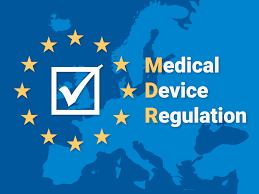Unlocking Europe: 2025 MDR Compliance Made Simple for IVF Innovators
Fourth Article in the FinDBest IVF Regulatory Affairs Series—Supporting ART Innovators with Region-Specific Market Access Strategies.

Navigating the European regulatory landscape is a critical step for any innovator in the Assisted Reproductive Technology (ART) space. As of 2025, the European Union’s Medical Device Regulation (MDR) stands as a rigorous, globally respected framework. For manufacturers of In Vitro Fertilization (IVF) and ART devices, achieving CE Marking under this regulation is not just a legal obligation—it’s a gateway to one of the world’s most significant markets.
This updated guide provides a clear roadmap to MDR compliance in 2025, ensuring your devices meet the highest standards of safety and performance.
1. Why the EU Still Sets the Global Standard
The EU remains a benchmark market for medical device safety and quality. The CE Marking, governed by Regulation (EU) 2017/745 (MDR), is a mandatory passport for any IVF and ART device to be sold within the European Union. With over 26 million patients accessing cross-border healthcare and more than 1,500 ART laboratories, Europe presents a substantial commercial opportunity for compliant manufacturers. Achieving a CE Mark signals to the world that your product has met a high bar for regulatory scrutiny.
2.Risk Classification for IVF & ART Devices
Under the MDR, the classification of a device dictates the path to conformity. It is based on the intended purpose and the potential risks associated with its use. Manufacturers must carefully document their justification for the classification applied. Here’s an updated look at typical classifications for IVF and ART devices:
| Product Example | MDR Class | 2025 Notes |
| Embryo transfer catheter | IIa | Considered surgically invasive for transient use |
| Culture media / mineral oil | IIb or III | Often substance-based, directly in contact with embryos; some authorities are up-classifying to III |
| Time-lapse incubators | IIb | Active therapeutic equipment with monitoring functions |
| Cryopreservation bags/vials | IIa or IIb | Depends on use duration and contact with tissues |
| AI-based embryo scoring software | IIa / IIb | Risk depends on clinical decision impact |
| Combined products (media + medicinal substance) | III | Requires consultation with medicines authority |
3.Core MDR Requirements (as of 2025)
🔹 Conformity Assessment Route
- Class I: Self-declaration
- Class IIa/IIb/III: Notified Body involvement mandatory
- Most ART devices require Annex IX assessment (QMS + tech documentation)
🔹 Unique Device Identification (UDI)
- Assign Basic UDI-DI + UDI-DI
- UDI carrier (barcode) required on labels and packaging
- Must register data in EUDAMED database
🔹 EUDAMED Status
- Modules released in phases; full implementation expected post-2026
- Actor & UDI/Devices modules active for voluntary use
- Start registration early to avoid bottlenecks later
🔹 Clinical Evaluation
- CER is essential and must be continuously updated
- Predicate equivalence no longer sufficient under MDR
- IVF devices: strong biological evidence required (e.g., MEA)
- AI-based tools: usability testing, human factors, data transparency, and cybersecurity required
🔹 Post-Market Surveillance (PMS)
- PSUR required for Class IIa and above
- Continuous updating of PMS plan and reporting to NB
4.Role of the European Authorized Representative (EC Rep)
For non-EU manufacturers, appointing an EC Rep is mandatory. They:
- Hold a copy of technical documentation
- Appear on labeling and IFU
- Serve as regulatory contact for authorities
- Monitor incidents and compliance activities
5.Common Pitfalls in CE Marking IVF Devices in 2025
| Pitfall | Impact | How to Fix |
| Misclassification | Incorrect documentation & route | Follow MDR Annex VIII carefully; review MDCG 2021-24 guidance |
| Insufficient clinical evidence | NB rejection, delays | Gap analysis, generate new data as needed, esp. for Class IIb+ |
| AI validation gaps | Usability or safety not demonstrated | Align with EU AI Act, show evidence of algorithm testing & cybersecurity |
| EUDAMED delay | Blocked vigilance or UDI tracking | Register under voluntary modules now |
| Supply chain roles unclear | Legal liability exposure | Ensure importers/distributors meet MDR obligations |
6.MDR Timelines for IVF Devices (2025)
| Class | MDR Path | Timeline | Review Body |
| I | Self-certification | 1–2 weeks | — |
| IIa | Annex IX + NB cert | 3–6 months | Notified Body |
| IIb | QMS + Tech Review | 6–12 months | Notified Body |
| III | Full eval + clinical | 12–18+ months | NB + Expert Panel |
Extended deadlines:
- Class III / implantable IIb: until Dec 31, 2027
- Other IIa / IIb: until Dec 31, 2028
- Custom implantables: until May 26, 2026
Key Takeaways for 2025
- MDR compliance is an ongoing obligation
- Most IVF devices are Class IIa or IIb with NB oversight
- CE Mark is a powerful global quality credential
- IVF-specific evidence like MEA results are expected
- Prepare early for EUDAMED, UDI, PMS and AI validation
Ready to unlock Europe and connect with MDR-ready IVF partners?
At FinDBest IVF, we help you:
-
Cut distributor search time by 50%
-
Identify EU partners with CE-marked experience and Notified Body familiarity
-
Connect with certified European Authorized Representatives (EC Reps)
-
Filter by country, product class, and MDR regulatory capabilities
-
Reach out directly to assess post-market, labeling, and UDI readiness

Disclaimer
This article is for informational purposes only and does not constitute legal or regulatory advice. Always consult a qualified EU regulatory affairs expert or your European Authorized Representative before market entry.
Table of Acronyms
| Acronym | Definition |
| MDR | Medical Device Regulation |
| CE | Conformité Européenne |
| QMS | Quality Management System |
| UDI | Unique Device Identifier |
| CER | Clinical Evaluation Report |
| PMS | Post-Market Surveillance |
| PSUR | Periodic Safety Update Report |
| NB | Notified Body |
| EC Rep | European Authorized Representative |
| MEA | Mouse Embryo Assay |
| GSPR | General Safety and Performance Requirements |
| AIA | Artificial Intelligence Act |






